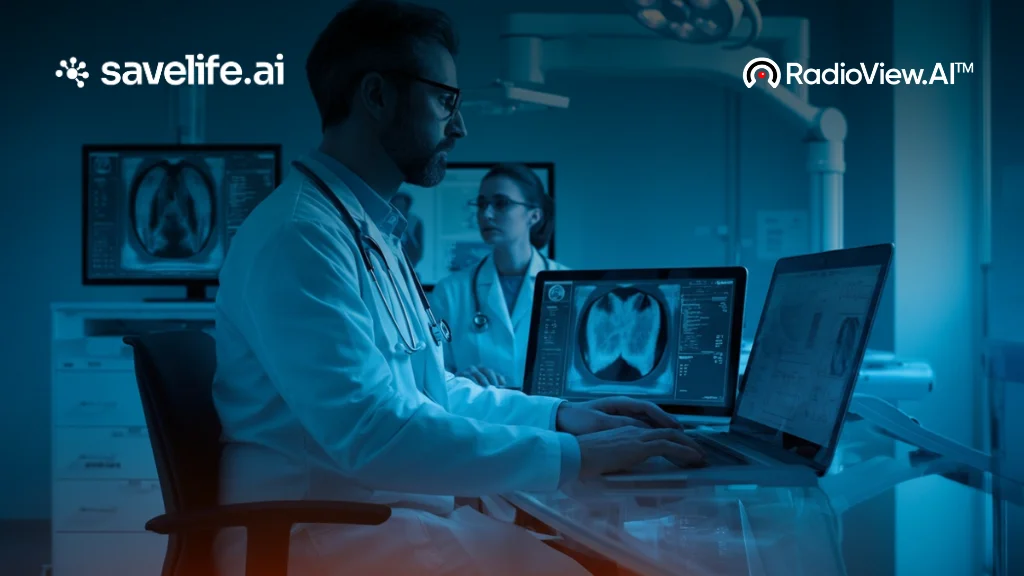AI in medical imaging is rapidly transforming radiology, making medical imaging more efficient, accurate, and accessible. By integrating AI-driven automation, radiologists can analyze images faster, reduce diagnostic errors, and improve patient care. This technological revolution is streamlining workflows, prioritizing critical cases, and even automating administrative tasks, allowing healthcare providers to focus more on patient outcomes.
The Role of AI in Medical Imaging
AI in medical imaging leverages machine learning and deep learning algorithms to process and interpret radiological images. These tools assist radiologists by identifying abnormalities, segmenting structures within images, and even generating detailed reports. As AI continues to evolve, its integration into radiology is enhancing diagnostic precision, minimizing human error, and accelerating decision-making in medical imaging.
Enhancing Radiology Workflows with AI
AI’s greatest impact on radiology is its ability to rapidly analyze vast amounts of imaging data, detecting subtle abnormalities in X-rays, CT scans, and MRIs with remarkable precision. This ensures early disease detection, reduces missed diagnoses, and enhances overall diagnostic accuracy. In critical cases like stroke detection, AI can prioritize urgent findings, flagging life-threatening conditions for immediate medical attention, which can ultimately save lives and improve patient outcomes.
Beyond diagnosis, AI also streamlines administrative tasks, automating report generation, categorizing images based on severity, and optimizing case management. By reducing the burden of manual documentation, AI allows radiologists to focus more on image interpretation and complex cases, enhancing both efficiency and the quality of patient care.
Overcoming Challenges in AI Adoption
Despite its benefits, integrating AI into radiology comes with challenges. Regulatory approval and ethical concerns are critical, as AI must comply with medical regulations like FDA approvals and HIPAA privacy laws. Fairness is also crucial, as biased training data can lead to inaccurate diagnoses. Additionally, many healthcare facilities rely on legacy PACS systems that may not support AI, though solutions like RadioView.AI’s X-API enable seamless integration without requiring a complete system overhaul.
Another common concern is whether AI will replace radiologists, but AI is designed to assist rather than replace human expertise. While it excels at pattern recognition and workflow automation, radiologists provide essential clinical reasoning, patient interaction, and contextual decision-making. The future of AI in medical imaging lies in collaboration, where AI enhances efficiency and accuracy while radiologists remain at the center of patient care.
The Future of AI in Radiology
As AI technology advances, its role in radiology will grow, particularly in personalized medicine. By integrating imaging data with genetic and patient history information, AI can help create tailored treatment plans, revolutionizing disease management. This is especially impactful in oncology, where AI can predict tumor progression and suggest personalized therapies. Similarly, self-learning AI models are evolving, continuously refining their diagnostic accuracy through real-world data, reducing false positives and negatives while improving predictive capabilities.
The adoption of cloud-based imaging solutions is also on the rise, with platforms like RadioView.AI enabling radiologists to collaborate seamlessly across locations. This remote access is especially valuable in underserved regions, where AI-powered imaging can bridge gaps in medical expertise and improve healthcare accessibility. AI’s integration with wearable imaging devices and point-of-care ultrasound (POCUS) will further decentralize diagnostics, making imaging more accessible and reducing dependence on centralized radiology departments.
Conclusion
As the adoption of AI in radiology continues to grow, its impact on healthcare will become even more profound. By embracing AI-driven innovations, radiologists can enhance their diagnostic capabilities, reduce burnout, and ultimately provide better care to patients. The future of radiology is here, and AI is at its forefront.
FAQs
- How is AI used in medical imaging?
AI speeds up image interpretation, improves early disease detection, and helps create personalized treatment plans, leading to better patient outcomes. - How is AI used in radiography?
AI optimizes scanner time, reduces patient wait times, and predicts delays in ultrasound, radiography, CT, and MRI using Radiology Information System (RIS) data. - What is the role of artificial intelligence in diagnostic imaging?
AI enhances imaging accuracy and assists in diagnosing and characterizing diseases, either automatically or with expert oversight. - Is AI used in MRI?
AI automates patient positioning in MRI scanners, reducing setup time and operator variability. - When was AI first used in medical imaging?
AI was introduced in radiology in 1992 as computer-aided detection, specifically for identifying microcalcifications in mammograms.
Reference: https://www.spectral-ai.com/blog/artificial-intelligence-in-medical-imaging/


